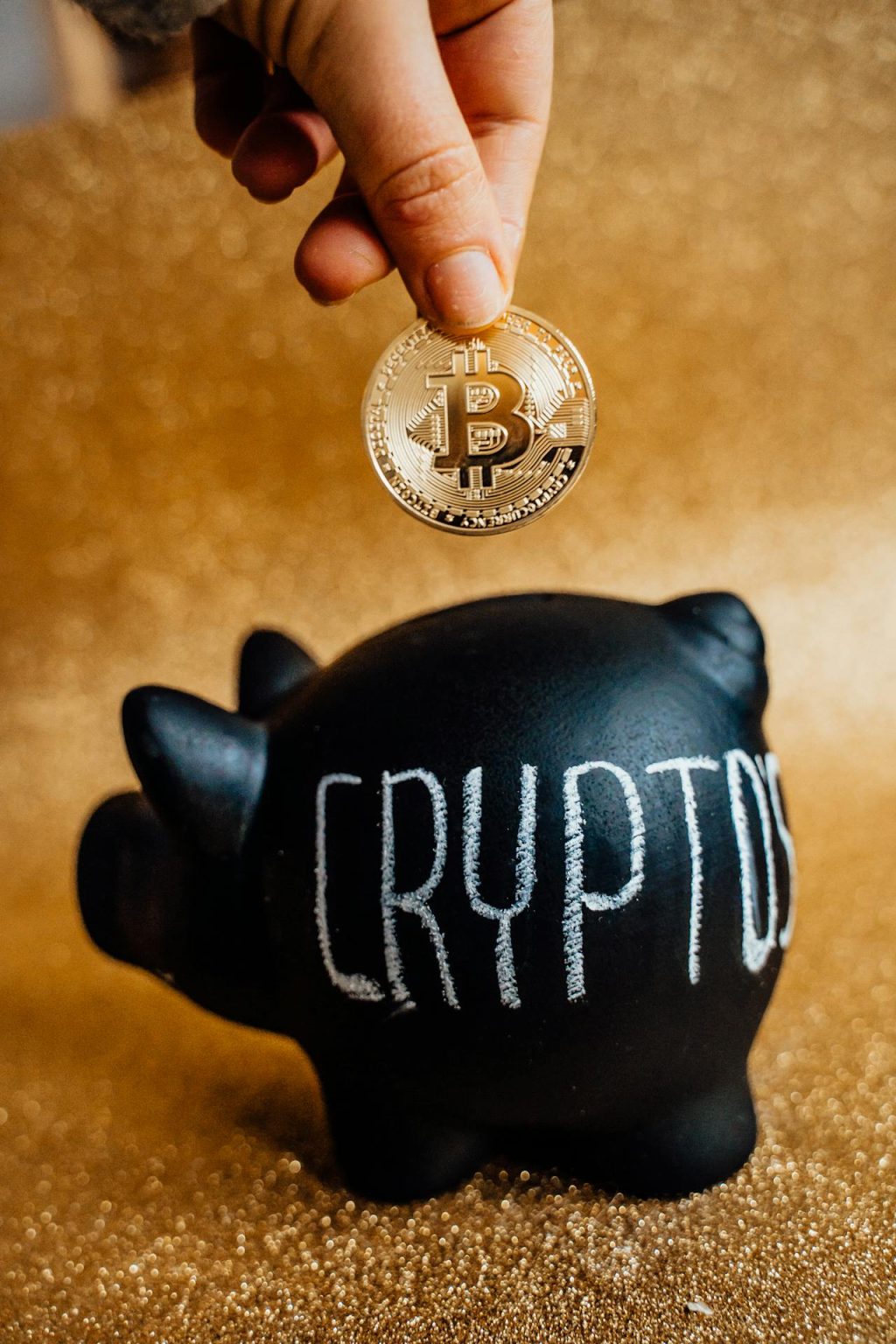
Cryptocurrency has taken the financial world by storm, captivating investors and tech enthusiasts alike. With terms like Bitcoin, Ethereum, and blockchain becoming part of everyday conversations, many people are left wondering: is cryptocurrency safe? While the allure of decentralized currencies promises freedom from traditional banking systems, it also raises questions about security and stability. Navigating this complex landscape can feel overwhelming for newcomers. In this post, we’ll break down what cryptocurrency really is and explore its associated risks and benefits to help you make informed decisions in your investment journey. Whether you’re a seasoned trader or just curious about digital currencies, understanding their safety will empower you to engage confidently with this evolving market.
Is Cryptocurrency Safe?
The safety of cryptocurrency is a multifaceted topic. On one hand, digital currencies offer users control over their assets through encryption and decentralized networks. This structure reduces the risk of centralized bank failures or government interference. However, no system is entirely foolproof.
Many people fall victim to scams and fraudulent schemes in the crypto space. Unscrupulous actors often exploit the lack of regulation to lure unsuspecting investors with promises of high returns. As appealing as it may sound, caution is essential when navigating this unregulated territory.
Technical vulnerabilities also pose significant risks. Hacking incidents have resulted in massive losses for individuals and exchanges alike. Even established platforms are not immune to breaches that can compromise user funds.
Moreover, market volatility adds another layer of concern regarding safety. Prices can swing dramatically within short periods, leading to potential financial ruin for those who invest without proper research or risk management strategies in place.
Understanding Cryptocurrency
Cryptocurrency is a digital or virtual form of currency that uses cryptography for security. Unlike traditional currencies issued by governments, cryptocurrencies operate on decentralized networks based on blockchain technology. This means transactions are recorded across many computers, making it difficult to alter any single record.
Bitcoin was the first cryptocurrency, created in 2009 by an anonymous person or group known as Satoshi Nakamoto. Since then, thousands of alternatives have emerged, including Ethereum and Ripple. Each offers unique features and applications.
Users can buy, sell, and trade cryptocurrencies through exchanges or directly with other users. Wallets store these digital coins securely while giving users access to their assets.
The appeal lies in its potential for high returns and the promise of financial independence from centralized authorities. However, this new frontier carries complexities that require careful consideration before investing.
Risks and Benefits of Cryptocurrency
Cryptocurrency is a double-edged sword. On one side, it offers significant benefits like decentralization, which allows users to have more control over their finances. This independence can be empowering and liberating for many individuals.
Another advantage is the potential for high returns on investment. Cryptocurrencies have shown remarkable growth in short periods, attracting investors eager to capitalize on this digital gold rush. The appeal of making substantial profits cannot be overlooked.
However, these opportunities come with risks that cannot be ignored. Market volatility makes prices swing dramatically within hours or even minutes. Such unpredictability can lead to significant losses for unprepared investors.
Additionally, the lack of regulation opens doors to scams and fraudulent schemes targeting unsuspecting participants. With various security breaches reported over the years, concerns about technical vulnerabilities also linger in the minds of potential users looking into cryptocurrency options.
Volatility
Volatility is one of the most prominent characteristics of cryptocurrency. Prices can swing wildly within a single day, leaving investors on edge. This unpredictability attracts both thrill-seekers and cautious participants.
The emotional rollercoaster that comes with crypto trading can be intense. One moment you might see significant gains, while the next could bring substantial losses. Such fluctuations often lead to panic selling or overzealous buying, further exacerbating price movements.
Several factors contribute to this volatility, including market sentiment, regulatory news, and technological developments. Speculation plays a huge role too; traders frequently buy based on hype rather than fundamentals.
For those considering investing in cryptocurrencies, it’s essential to weigh your risk tolerance carefully. Understanding that prices are subject to rapid changes will prepare you for what lies ahead in this digital financial landscape.
Regulatory uncertainties
Regulatory uncertainties loom large over the cryptocurrency landscape. Many countries are still grappling with how to classify and regulate digital assets. This lack of clarity can create confusion for investors and businesses alike.
Different jurisdictions approach crypto regulation in vastly different ways. Some nations embrace it, while others impose strict limitations or outright bans. This inconsistency complicates international transactions, making compliance a moving target.
The potential for sudden regulatory changes adds another layer of risk. Governments may introduce new laws that affect how cryptocurrencies operate overnight. Such shifts can lead to market instability and impact investor confidence.
Investors must stay informed about evolving regulations in their region and globally. Ignoring these developments could expose them to unforeseen risks that jeopardize their investments in the volatile world of cryptocurrency.
Securities and scams
The world of cryptocurrency is not just about innovation; it’s also a breeding ground for scams. Fraudulent schemes lure unsuspecting investors with promises of quick returns. Many fall victim, believing they are making a smart investment.
One common tactic involves initial coin offerings (ICOs). Some ICOs promise groundbreaking technology but turn out to be worthless. Scammers create fake websites and social media profiles to promote these projects, adding an air of legitimacy that can deceive even experienced investors.
Phishing attacks are another major threat. Hackers may pose as reputable exchanges or wallets, tricking users into revealing their private keys. Once they gain access, victims often find it nearly impossible to recover their funds.
Even established cryptocurrencies aren’t immune to manipulation. Pump-and-dump schemes artificially inflate token prices before orchestrated sell-offs leave latecomers at a loss. Navigating this landscape requires vigilance and thorough research to avoid falling prey to malicious actors.
Technical risks
Technical risks are a crucial aspect to consider when assessing whether cryptocurrency is safe. The technology behind cryptocurrencies, particularly blockchain, is innovative but not foolproof. Software vulnerabilities can exist, potentially exposing users to hacking or theft.
Additionally, the complexity of wallets and exchanges can lead users into making mistakes. Misplacing private keys or using insecure platforms increases the risk of losing funds permanently. Cybersecurity threats also loom large in this digital space; hackers often target crypto exchanges for their significant assets.
Furthermore, the rapid pace of technological advancements means that what’s secure today may not be tomorrow. Users must stay informed about new developments and security practices within the cryptocurrency landscape. Being proactive about these technical aspects minimizes potential risks associated with using digital currencies.
As you navigate through your cryptocurrency journey, understanding these technical challenges will enhance your ability to make safer choices in this dynamic environment. Always prioritize security measures and remain vigilant against emerging threats as they arise in this ever-evolving field.

I’m an enthusiast of digital finance and online entertainment, with extensive experience in the worlds of cryptocurrency, sports betting, and casino gaming. My mission is to provide readers with reliable information to help them make informed decisions in the realm of online gambling and digital investments. On this blog, I share the latest trends, platform reviews, and tips for safe and responsible gaming.
More Stories
What is the best cryptocurrency wallet?
Is cryptocurrency dead?
How to create a cryptocurrency?